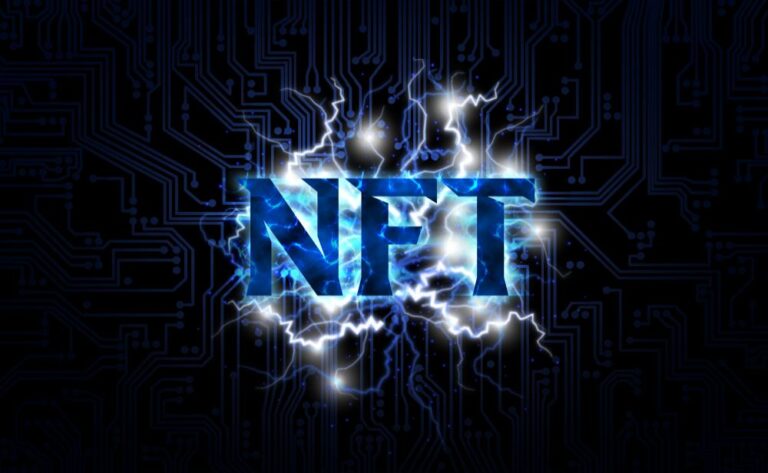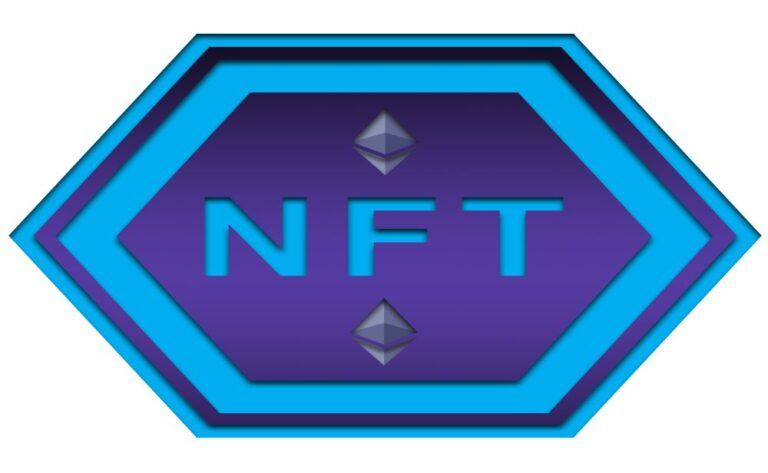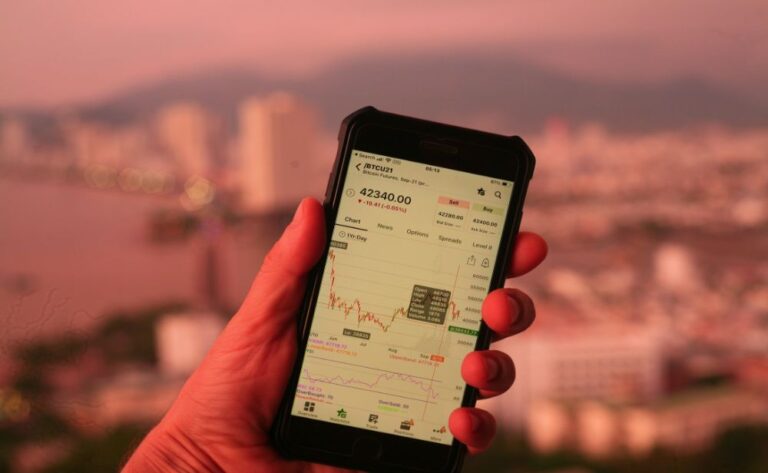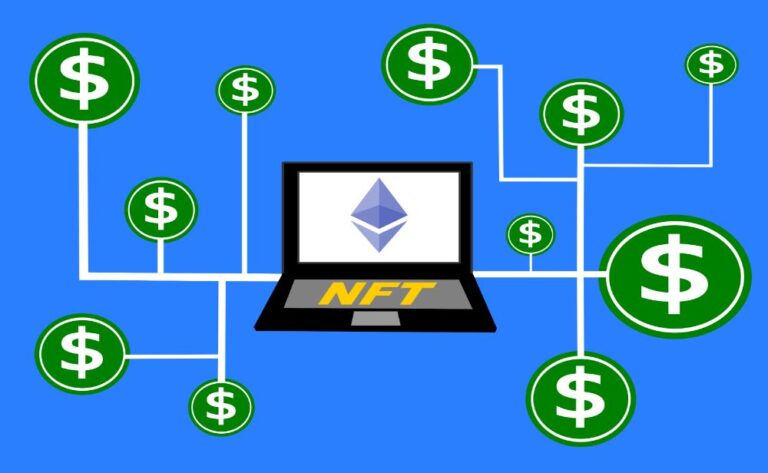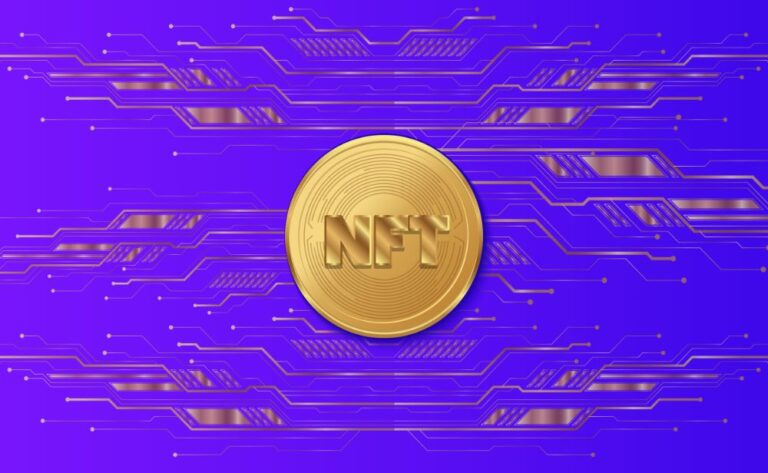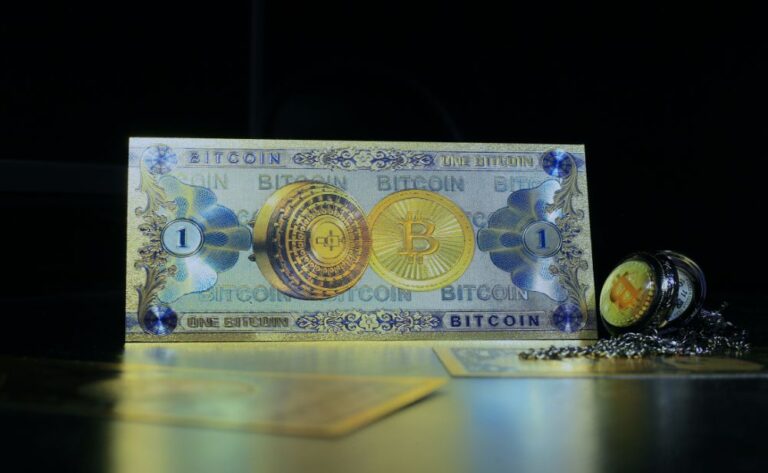
Non-fungible tokens are NFTs. They are special products that are incomparable to other things. For instance, a unique trading card is an NFT since you cannot just swap it out for another card. Your card will become different if you exchange it for another card. These are distinct from fungible things, which are frequently interchangeable. For example, if you exchange one bitcoin for another, you remain in the same situation as when you started. On the other hand, you’ve done extremely well for yourself if you trade a nearly useless mass-produced baseball card from the late 1980s for a 1909 American Tobacco Company T206 Honus Wagner card, which is worth over $1 million.
Nowadays, digital NFTs are the norm. For creators, this makes it especially simple to give their supporters something rare and special. In the same way that people have long collected actual paintings, some NFTs, like digital artworks, are now the subject of collectors’ interests. Furthermore, some of these NFTs have sold for astronomical prices. A digital artist by the name of Beeple sold one NFT piece at Christie’s for $69 million.
CryptoKitties is an easier-to-understand variation of a contemporary digital NFT. They are a game on the Ethereum blockchain where players may purchase, trade, and breed virtual “cats.” Every “cat” is different (just like your real-life pet).
NFTs resemble Bitcoins and other cryptocurrencies in some aspects, with the obvious exception that they are non-fungible and non-divisible. The initial NFTs were a part of the Ethereum blockchain, which further maintains digital data to identify their singularity. Now, other blockchains also support NTFs. Not all NFT marketplaces buy and sell every type of NFT since different NFTs use different blockchain technologies. It’s common for creators to base their decision on an NFT marketplace’s support for a certain NFC token standard. ERC-721 and ERC-1155 are the two standards that Ethereum has so far produced. Since then, the rival Binance has published standards BEP-721 and BEP-1155. The two “1155” standards are different from the original “721” standards in that they permit the bundling and transaction of numerous NFTs.
The majority of NFT platforms demand that customers use cryptocurrency and a digital wallet to complete their transactions.
Top NFT Marketplaces for Creators:
- 1. OpenSea
- 2. Rarible
- 3. SuperRare
- 4. Foundation
- 5. AtomicMarket
- 6. Myth Market
- 7. BakerySwap
- 8. KnownOrigin
- 9. Enjin Marketplace
- 10. Portion
- 11. Async Art
- 12. Nifty Gateway
- 13. Decentraland
- 14. Zora
- 15. Mintable
- 16. Institut
- 17. Magic Eden
- Frequently Asked Questions
OpenSea
OpenSea adamantly claims to be the largest NFT marketplace. A broad variety of non-fungible tokens are available, including collectibles, censorship-resistant domain names, art, trading cards, sports, and virtual worlds. ERC721 and ERC1155 assets are included. Axies, ENS names, CryptoKitties, Decentraland, and other unique digital assets are available for purchase, sale, and discovery. They offer more than 700 distinct projects, such as digital art projects, trading card games, collectible games, and name systems like ENS (Ethereum Name Service).
With the help of the item minting tool from OpenSea, creators can produce their own goods on the blockchain. It can be used to generate collections and NFTs without cost and without writing a single line of code. You can quickly join OpenSea if you’re creating your own smart contract for a game, digital collectible, or other project that uses special digital goods on the blockchain.
When selling products on OpenSea, you have the option of setting a fixed price, a falling pricing, or an auction price.
the largest digital market in the world for non-fungible tokens (NFTs), such as ERC721 and ERC1155, and crypto collectibles. Axies, ENS names, CryptoKitties, Decentraland, and other unique digital assets are available for purchase, sale, and discovery.
Rarible
The ERC-20 RARI token is what “owners” of the community-owned NFT marketplace Rarible use to transact. Active platform users that buy or sell on the NFT marketplace receive the RARI token from Rarible. Every week, it delivers 75,000 RARI.
The platform gives art materials special attention. Books, music albums, digital artwork, movies, and other types of productions can all be sold by creators using Rarible to “mint” fresh NFTs. Even better, the creator can restrict access to the finished product to the buyer while giving everyone else who visits Rarible a sneak peek.
Rarible buys and sells NFTs in a variety of fields, including memes, metaverses, music, art, photography, games, and more.
SuperRare is primarily a marketplace where users can purchase and sell one-of-a-kind, limited-edition digital artworks. Each work of art is truly produced by one of the network’s artists and tokenized as a crypto-collectible digital object that you can buy, sell, and possess. They position themselves as a new way to engage with art, culture, and collecting online, as Instagram and Christie’s met.
Each piece of art on SuperRare is a digital collectible—a digital item protected by encryption and monitored on a blockchain. A social network has been created by SuperRare on top of the marketplace. Digital collectibles are ideal for social settings because they have a transparent ownership history.
Ether, the Ethereum network’s native cryptocurrency, is used for all transactions.
Currently, SuperRare only collaborates with a select group of carefully chosen artists; however, you can use a form to submit your artist profile and be included to their list of potential collaborators for their impending full launch.
Foundation
To further culture, Foundation is a specialized network created to connect digital producers, crypto natives, and collectors. The phrase “new creative economy” describes it. Digital art is its main area of interest.
They made an open invitation for creators to experiment with cryptocurrencies and play with the idea of value in their first blog post on their website, which went live in August 2020. To “hack, disrupt, and alter the value of creative work,” they invited creators.
Every time an NFT trades on Foundation, the artist receives 10% of the secondary transaction’s value, i.e., they get paid every time a collector sells their piece to someone else for more money.
Numerous websites employ AtomicMarket, a shared liquidity NFT market smart contract. When something is listed on one market, it appears on all other markets as having shared liquidity.
It is a market place for Atomic Assets, an eosio blockchain standard for non-fungible tokens. Anyone can develop digital assets using the Atomic Asset standard, tokenize them, and use the Atomic Assets marketplace to purchase, sell, and auction them.
On AtomicMarket, you can both create your own listings and search through those that are already there. NFTs from well-known collections are marked with a verification tick, making it simpler to identify genuine NFTs. Collections that are harmful are blacklisted.
Myth Market is a collection of practical online shops that supports numerous digital trading card companies. GPK.Market, GoPepe.Market, Heroes.Market, KOGS.Market, and Shatner.Market are currently some of its featured marketplaces where you can purchase digital Garbage Pail Kids cards, Blockchain Heroes trading cards, KOGS trading cards, and GoPepe trading cards (for William Shatner memorabilia.)
BakerySwap is a decentralized exchange (DEX) and automated market maker (AMM) on Binance Smart Chain (BSC). It makes use of a local BakerySwap token (BAKE). A variety of decentralized financial (DeFi) services are available at BakerySwap, which also functions as a crypto launchpad and non-fungible token (NFT) market.
In its NFT supermarket, users can purchase digital art, meme contests, and NFT-based games with BAKE tokens. To obtain additional BAKE tokens, you can utilize NFTs in “combo meals.” Additionally, minting and selling your own artwork is a basic, easy process.
A market where you can find and acquire unique digital art is called KnownOrigin. Every piece of digital art available on KnownOrigin is genuine and entirely unique. The platform allows creators to sell their products to collectors who value authenticity. The Ethereum blockchain serves as its security.
The KnownOrigin gallery accepts submissions of digital art as JPG or GIF files with all files stored on IPFS.
The Enjin Market
You can research and exchange blockchain assets using Enjin Marketplace. It serves as the official market for NFTs with an Enjin base. To date, it has made it possible for Enjin Coin transactions totaling $43.8 million and 2.1 billion NFTs to be made on digital assets. There have been 832.7K trades. The Enjin Wallet makes it simple to list and buy collectibles and video game merchandise.
The Projects page showcases Enjin-powered blockchain projects, ranging from gamified reward schemes like Microsoft’s Azure Heroes, community-created collectibles, and NFTs by businesses like Binance and Swissborg, to game item collections like the Multiverse and games like Age of Rust and The Six Dragons.
Snack
Through the use of Blockchain technology, Portion connects artists and collectors so that they may easily buy, sell, and own works of art and collectibles with complete transparency. The Artist Community is a global network of decentralized artists and creators that is a part of it.
Anyone may become a collector thanks to Portion. It’s simple to swap cryptocurrency for collectibles and works of art since you can maintain both your actual and digital collection in one location.
On the Ethereum Blockchain, Portion Tokens are ERC-20 assets that are used to decentrally regulate and vote on the platform’s future. For mining liquidity, artist grants, collaborations, and future team members, new coins are released. When artists produce new NFTs, new Portion Tokens are also given out; each one is now worth 500 PRT.
A blockchain-based art movement is known as async art. You may produce, amass, and exchange works of programmable art. Both “Masters” and “Layers” are for sale. A Master is a unique edition work of art, and Layers are the parts that make up a Master image. The artist decides what unique skills to bestow on each layer. Regardless of who owns it, the Master image will reflect any changes you make to a Layer. The parameters of an artist’s work are chosen by them, and they provide each unique collector total choice over every aspect. For instance, they might allow users to alter the background’s appearance, a character’s location, or the sky’s color.
Since February 2020, there have been over $6M in bid volume and over $1.5M in artist sales on the platform.
Nifty Gateway is a well-known NFT marketplace where works by digital artists and famous people like Beeple, Pak, Daniel Arsham, and Grimes have been sold. Gemini, a licensed and safe cryptocurrency exchange, manages the site, which is regarded as a high-end marketplace because of its partnerships with well-known producers and companies.
Nifty Gateway is distinctive in that it gives producers the opportunity to get a cut of sales on the secondary market. So you will get a portion of revenue when someone buys your NFT. Additionally, Nifty Gateway offers “open editions,” which permit authors to print an infinite number of copies of their works for a short period of time.
Additionally, Nifty Gateway handles all the technical parts of the creation and sale of NFTs by offering you technical support, making it simpler for creators to sell NFTs. If you’re a collector as well, Nifty Gateway enables you to buy other NFTs with fiat money.
Nifty Gateway hosts the NFTs it buys, unlike the majority of NFT marketplaces. As a result, neither the NFTs you sell nor buy are kept in a wallet. Instead, they are kept by Gemini and Nifty Gateway and are kept in your Nifty account.
Decentralization
Decentraland is a virtual reality (VR) universe built on the Ethereum blockchain, making it a secure and trustworthy NFT market. It enables users to purchase digital items that are kept in smart contracts on the Ethereum blockchain, such as wearables, artwork, and even names.
Decentraland not only enables you to buy digital assets, but also enables you to produce your own goods that you can sell on the Decentraland Marketplace. It offers a simple drag-and-drop Builder tool that enables you to construct 3D scenes and avatars.
Decentraland stands out from other marketplaces because its tokens are made to be equally valuable and transferable as those of their physical counterparts.
When Zora first launched, it was an invitation-only NFT market. However, it has since evolved into an open marketplace where creators, collectors, and artists can purchase and sell a variety of NFTs, such as media, music, and the arts. It functions as a media registry protocol that enables artists to share their works with others, make money from sales, and publish their works online.
The “Collective Creation” concept, where the platform and its users collaborate to build a more open, approachable, and ownable infrastructure, is promoted in Zora’s manifesto. Giving creators additional ownership rights and ensuring they are paid for their work are two ways Zora accomplishes this. You can enable perpetual bids, which let customers offer any kind of currency as a bid on your works. You won’t be charged when you list and sell your NFTs on the platform because it also features a zero-fee protocol.
Zora has an original structure. It encourages producers to produce one unique work that is freely available to other users rather than selling copies of digital products and artificially inflating their scarcity. The token itself may be sold numerous times, and if it becomes more well-known, collectors may buy the piece straight from the creator. If you can sell an NFT, you receive a portion of each sale. There are additional opportunities for you to make more money as your token becomes popularity.
The Ethereum blockchain serves as the foundation for the NFT marketplace Mintable. It makes it simple for you to sell or auction your goods and enables authors to mint their NFTs for free. Despite being relatively new to the market (it was created in 2018), Mark Cuban, a billionaire investor and entrepreneur, is backing Mintable.
Numerous people, including musicians and animators, can create, distribute, buy, sell, and exchange their digital goods on Mintable. The platform enables producers to leverage blockchain-based smart contracts so they may produce digital assets without having to know how to code. Additionally, it enables artists to convert their digital products, including as PDFs and MP4s, into NFTs that they can sell via their own Mintable store.
The gasless feature of Mintable makes it simple for creators to mint and list objects (if you mint using Immutable X). Its impressive array of digital assets, which can include everything from games to art, is what makes Mintable so enticing to both makers and consumers. Visit the Mintable Academy if you’re just starting out selling NFTs to learn how to build your own store, sell more products, and advertise them.
Prior to using Mintable to its full potential, you must first buy Ethereum from exchanges like Gemini and Binance. To enable all of your marketplace transactions, you must next link your wallet—where you can keep your digital assets and cryptocurrency—to Mintable. The wallet supported by Mintable is MetaMask. It is no longer supporting Coinbase as of this writing.
Institut
According to Institut co-founder Joe Kennedy, unlike the majority of NFT marketplaces, which are created or managed by IT businesses or entrepreneurs, Institut is a platform that was created with a “‘art-first’ mindset.” It’s a leading NFT platform that makes use of cutting-edge technology to empower artists and introduce fans of modern art to the world of NFTs. It also aspires to serve as a link between the conventional and digital art groups, which are two separate communities.
Imagine it as a modern art gallery on the internet, but for NFTs. The platform’s artists and works are carefully chosen and curated. Although Institut only accepts submissions by invitation, it nonetheless encourages artists to do so. The Institut staff will then send you an invitation if your submission is accepted.
The portal hosts a diverse range of foreign performers. Adrian Schachter, Betty Leung, and HUSH are among the members of Institut at the moment.
Institut serves as a marketplace and NFT platform. It allows artists access to an Institut wallet they can use to store their works and can mint NFTs on their behalf. The same wallet can be used to buy additional NFTs through fixed-price sales or live auctions.
Institut is based on the Ethereum blockchain, but instead of using gas fees, it employs a hybrid method. Utilizing their email addresses and credit cards, other fans can use the same approach to buy NFTs even without using a Metamask wallet.
For primary sales, artists receive 85% of the proceeds and up to 10% for secondary sales.
Magic Eden
As a “web3-first marketplace,” Magic Eden is a Solana NFT marketplace. Over 7,000 collections and $1.6 billion in secondary trade have been made so far.
Magic Eden is a platform for NFT games on the Solana blockchain that also assists game developers and established Eden Games, a hub for NFT games. Additionally, it provides white-label and partnership marketplaces so that others can build their own marketplaces. Among the NFT markets powered by Magic Eden are Galactic Geckos NFT and Thugbird’z Thugstore.
Magic Eden also has its own unique minting platform, the Launchpad. It provides access to hassle-free minting with specialized development help for creators. In only four easy actions, creators can start minting:
• Stop by the launch pad.
• Connect your wallet from Solana.
• Await the presale or public mint countdown.
• Commence minting following the countdown
Another method for minting is provided by Magic Eden for artists. On the Magic Eden platform, you can mint your NFT on a collection’s own webpage. You can join a collection’s Discord server to learn more.
Magic Eden only supports Solana wallets like the Phantom wallet because it is based on the Solana blockchain.
FAQ
An NFT is what?
A non-fungible token (NFT) is one. It is a special object that is incomparable to anything else. A one-of-a-kind trading card, such as a digital piece of art, is an example of an NFT since you simply cannot replace it with any other piece of art. Since most NFTs today are digital, it is quite simple for producers to gift their supporters something rare and special. Although they resemble Bitcoins and other cryptocurrencies, they cannot be divided or converted into other currencies.
Is it possible to sell on SuperRare?
No. Currently, SuperRare only collaborates with a select group of carefully chosen artists. You can utilize a form to submit your artist profile and get on SuperRare’s radar for their future full launch if you want to use this marketplace to sell one-of-a-kind, single-edition digital artworks.
Where can I buy collectible digital art?
You may, for instance, look at KnownOrigin. You may find and acquire rare digital artwork on this market. On KnownOrigin, only real, one-of-a-kind artworks are sold. The Ethereum blockchain serves as its security. Portion is another option. Portion’s wonderful feature is that it makes it possible for everyone to be a collector. It is simple to trade cryptocurrency for artwork and other collectibles since you can manage your physical and digital collections in one location.
Where are NFTs sold by creators?
Creators can sell their NFTs on a variety of online markets. Most of these sites demand that customers utilize cryptocurrencies and have a digital wallet in order to make purchases. Check out OpenSea, Async Art, Foundation, Rarible, and Myth Market, for instance. With more than 700 separate projects, OpenSea bills itself as the largest NFT market.
How is async art implemented?
You may make, acquire, and exchange programmed art using Async Art. Either the 1/1 edition artwork or the individual “Layers” that make up the master image are available for purchase (called the Master image). The artist has assigned each layer with unique properties. Therefore, regardless matter who owns the Layer, the Master image will reflect whatever changes you make. Which elements, such as the background color, can be changed by certain collectors is decided by the artist.
